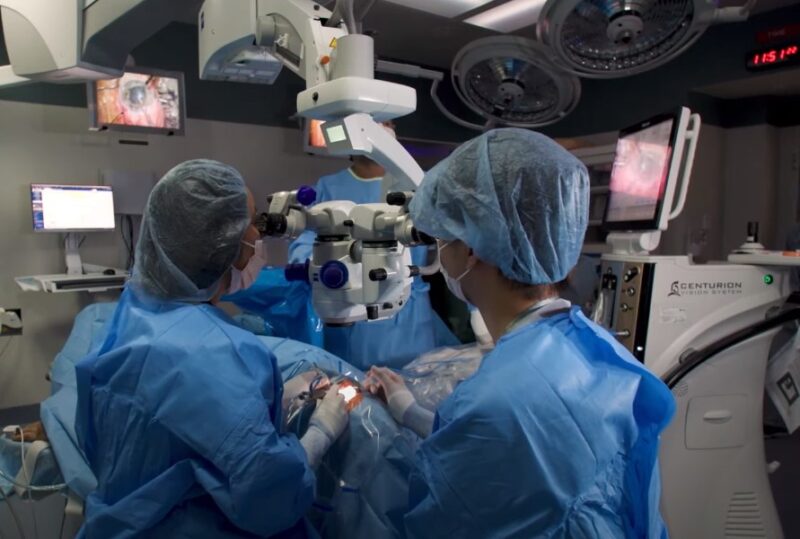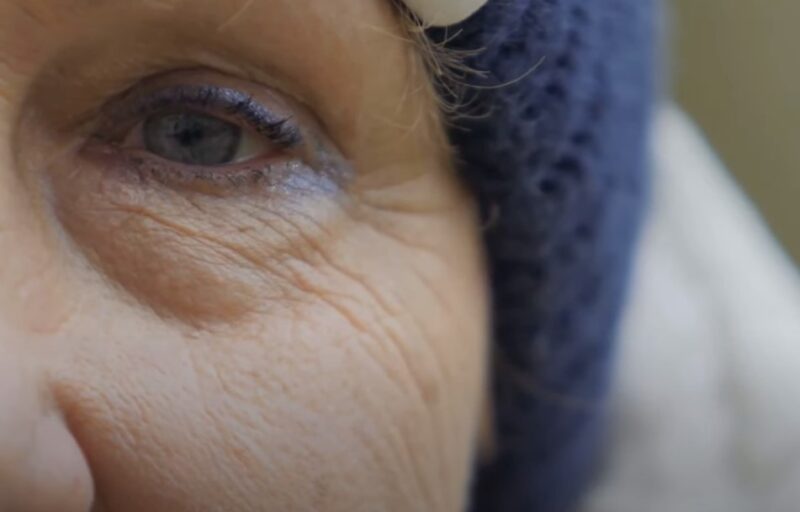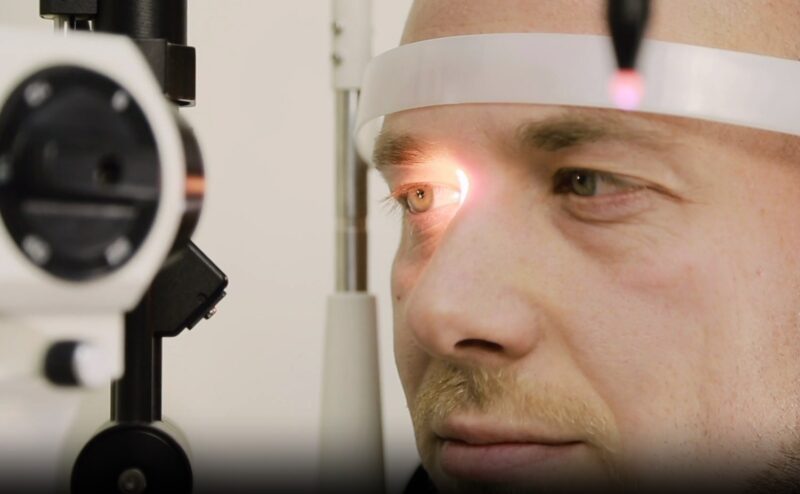Cataracts are a widely recognized yet often misunderstood vision ailment. With age, many individuals encounter changes in their vision, and one of the prevalent culprits behind these alterations is the development of cataracts. But what are they exactly?
This insight aims to elucidate the nature, causes, implications, and treatments associated with cataracts, providing a holistic understanding for those curious or affected by this condition.
The Nature of Cataracts
Before anything else, we want to discuss the very nature of this condition.
Formation and Progression
Cataracts don’t appear overnight. Instead, they gradually develop over the years. The lens, located behind the iris, works like a camera lens, focusing light onto the retina. As we age or due to other factors, the proteins in the lens start clumping together, forming cloudy areas.
As this area grows, vision becomes blurrier and distorted. When the condition progresses, the cloudy area can grow denser, making it harder to see. In some cases, it might start as a small spot but can expand, making daily tasks like reading or driving challenging.
Types and Classification
There isn’t just one type of cataract. They can be classified based on various criteria:
| Type | Description |
|---|---|
| Age-related | Most common, developing as we age |
| Congenital | Present at birth or developing in early childhood |
| Secondary | Resulting from other medical conditions or medications |
| Traumatic | Caused by an injury to the eye |
It’s essential to understand the specific type to tailor the treatment approach best.
Causes and Risk Factors

While aging is a predominant cause, several other factors can increase the risk of developing cataracts. Let’s explore these contributing elements.
Underlying Medical Conditions
Many health conditions can indirectly contribute to cataract formation. Diabetes, for instance, accelerates the progression in some individuals. Hypertension and obesity can also be factors. Additionally, previous eye surgeries or conditions can make one more susceptible.
Prolonged exposure to ultraviolet light, certain medications like corticosteroids, and lifestyle factors such as excessive alcohol consumption can also play a role in their onset.
Genetics and Lifestyle Choices
Genetics can play a crucial role in determining one’s susceptibility:
- A history of cataracts in the family can raise one’s risk.
- Tobacco use accelerates lens clouding.
- A diet lacking in antioxidants may influence cataract progression.
- Awareness of these factors can help in early detection and possible prevention.
Treatment and Prevention

While cataracts can be discomforting, advancements in medical science offer effective treatments. But, is it possible to prevent or delay their onset?
Surgical Interventions
The primary treatment that severely affect vision is cataract surgery. The procedure involves removing the clouded lens and replacing it with a clear, artificial one. This surgery is among the most performed and has a high success rate, restoring vision in the majority of cases.
While surgery is the most effective method to treat this condition, it does come with a number of potential disadvantages. Post-surgery, patients might require glasses for certain tasks. The improvement in clarity and color perception is usually significant.
Preventive Measures
While it’s challenging to prevent age-related cataracts entirely, certain measures might help delay their onset:
| Recommendation | Benefit |
|---|---|
| Wearing sunglasses | Protecting the eyes from UV rays can help |
| Regular eye check-ups | Early detection can make management easier |
| A balanced diet | Antioxidants and essential vitamins can potentially slow progression |
Being proactive in eye care can make a significant difference in the long run.
Living with Cataracts

Being diagnosed with cataracts doesn’t mean an immediate drop in the quality of life. Many people live with this condition for years before needing surgery. Let us discuss the day-to-day experience of those with cataracts and tips for coping.
Daily Challenges and Adaptations
As cataracts progress, the affected individuals might notice specific challenges in their daily activities. Bright lights might seem glaring, or colors may appear faded. Night driving can become particularly challenging due to the increased glare from oncoming headlights.
To adapt, many individuals opt for anti-glare glasses, increase indoor lighting, and use magnifying tools for reading. Limiting nighttime driving or seeking alternative transportation can also help in managing the symptoms.
Leveraging Technology and Assistive Devices
The digital age has brought forth a plethora of tools designed to assist those with visual impairments.
From audiobooks and voice-activated devices to apps that can magnify text or read aloud, technology can play a significant role in making daily tasks easier. Many modern smartphones and computers also come equipped with accessibility features tailored for those with vision challenges.
Taking the time to learn and integrate these tools into daily life can drastically improve independence and confidence.
Emotional Impact and Support
A decline in vision can understandably bring feelings of frustration or sadness. It’s essential to acknowledge these feelings and seek support when necessary.
Joining support groups or connecting with others who are going through a similar experience can be immensely beneficial.
Loved ones play a crucial role in providing emotional and physical assistance. Educating them about the condition can help them understand the challenges and offer appropriate support.
Emerging Research and Hope

Medical science is ever-evolving, and researchers are continually working on finding better treatments and understanding cataracts more comprehensively. Let’s explore some of the promising research in this domain.
According to a study conducted by Anglia Ruskin University, we just might be on a way to revolutionize cataract treatments with new methods.
Potential Medications
The idea of treating cataracts without surgery is a topic of considerable interest. Some researchers are exploring potential eye drops that could dissolve the clumps of protein that cloud the lens.
While these are still in the experimental stages, the prospects of non-invasive treatments are promising.
Regular advancements in technology also ensure that surgical methods become safer, quicker, and more efficient with time.
Genetic Studies and Prevention
The genetic factors behind cataracts can unlock potential preventive measures.
By studying families with a history of early-onset cataracts, researchers hope to identify the genes responsible for the condition. This could pave the way for personalized prevention strategies or targeted therapies.
FAQs
Do cataracts develop quickly or over time?
Cataracts generally develop slowly over several years. In some cases, they might progress faster, especially if related to injury or certain medical conditions.
Is there an age at which cataracts typically start forming?
Cataracts often start to develop in people over 40 but become more common with increasing age. significant symptoms might not appear until later in life.
Do cataracts cause complete blindness?
If left untreated, cataracts can lead to severe vision impairment, but they do not cause total blindness. Early detection and treatment can prevent significant vision loss.
How frequently should I get my eyes checked to monitor for cataracts?
Regular eye exams are recommended every two years for adults aged 18 to 60 and annually for those over 60 or those with risk factors.
Can lifestyle or diet influence the progression of cataracts?
Yes, a diet rich in antioxidants and vitamins can potentially slow down cataract progression. Similarly, a healthy lifestyle, including not smoking, can positively influence eye health.
Epilogue
A cataract isn’t just a medical term or a diagnosis; it represents a journey of adaptation, resilience, and potential treatment. While it’s a common age-related condition, advancements in medicine and technology provide hope for effective management and clearer vision.
By staying informed and proactive, individuals can not only address the challenges posed by cataracts but also continue to lead vibrant, fulfilling lives.















